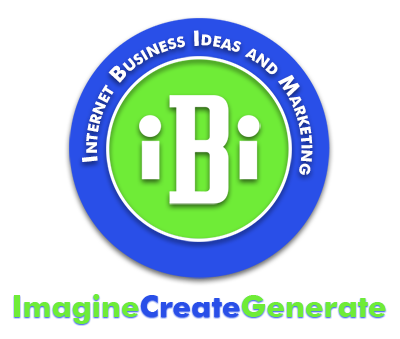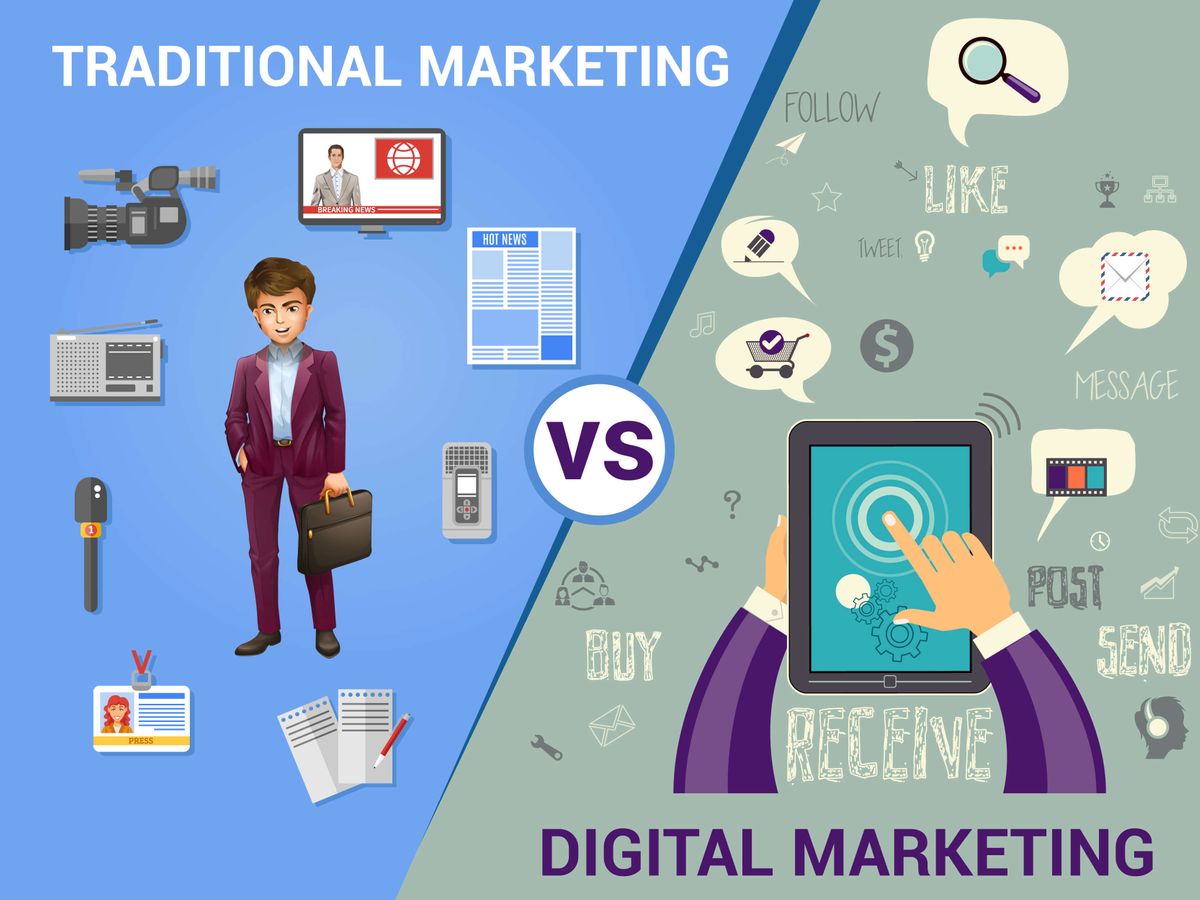Before I go through the pros and cons of both marketing verticals I want everyone to know that I recommend having a diversified portfolio to maximize your marketing strategies.
Traditional marketing is a conventional mode of marketing that helps to reach out to a semi-targeted audience with various offline advertising and promotional methods.
· Print (magazines, newspapers, etc.)
· Broadcast (TV, radio, etc.)
· Direct Mail (catalogs, postcards, etc.)
· Telephone (telemarketing, sms marketing, etc.)
· Outdoor (billboards, fliers, etc.)
Digital Marketing is all marketing efforts that use an electronic device or the internet. Businesses and brands leverage digital channels such as search engines, social media, email, and other websites to connect with current and prospective customers. There are only 7 types of Online Marketing:
1) Social media marketing - Social media marketing is the process of acquiring attention and sales through the use of social media platforms such as Facebook, Instagram, or Twitter. Now, social media marketing can be split into two camps: organic (free) or paid.
2) Influencer marketing
3) Search engine optimization (SEO) - The process of optimizing websites and digital content to improve search engine rankings, which in turn, maximizes the number of visitors to a particular web page.
4) Affiliate marketing
5) Email marketing
6) Content marketing
7) Paid advertising (PPC) - is a form of internet marketing where advertisers pay to show their adverts on search engines and other online platforms, such as Facebook, YouTube, LinkedIn, and Instagram
Numbers 1, 3, and 7 are how 94% of all transactions made online!!
Here are some important facts. 50 years old is about the age where individuals grew up with computer technology from birth. It’s not “new” technology is just a normal way of life for this demographic unlike the baby boomer generation and those before them. 50 years old is also the average age of over 80% of CEO’s and business owners in our country. There are Almost 2 Trillion annual searches worldwide on just Google. Share of adults in the United States who use the internet in 2018, by age group (Share of population):
· 18 to 29 years 98%
· 30 to 49 years 97%
· 50 to 64 years 87%
· 65+ years 66%
BASED ON THESE STATISTICS ALONE WHY WOULDN’T YOU PUT YOUR EFFORTS TOWARDS ONLINE (DIGITAL) MARKETING?
Traditional Marketing is a one-way conversation and in most cases once executed can’t be changed swiftly. For example, when you put an ad in a newspaper, magazine, billboard, or on tv you are telling that individual about your product when YOU decide is best. If something needs to be changed there is an arduous and typically pricey process that it entails. For example, If the potential client is reading a sporting magazine maybe they skip your advertisement just to read their article. If someone is on their way to dinner and see your attorney billboard they usually aren’t remembering your contact information. As a matter of fact, I bet you couldn’t name 50% of the billboards that you pass by EVERYDAY during the work week.
Digital Marketing is reaching the client when THEY want to purchase or research your products and services. For example, if someone wants to buy a TV they typically google types of TV’s. This potential customer is motivated and further down the buying chain. The goal is to get your digital ad in front of them when they are looking for this service.
THE COST: When it comes to the cost of digital marketing versus traditional marketing, digital wins’ hands down. The experts in this field will also tell you this is true when it comes to reaching the masses with just one post, at a reasonable cost per acquisition, and is measured. This debate was concluded a few years ago when events like Cyber Monday (https://en.wikipedia.org/wiki/Cyber_Monday ) and Amazon Prime Day (https://www.theverge.com/amazon-prime-day-deals-tech ) financially outperformed retail by an substantial margin. Quite a few companies have gone bankrupt or downsized (Kmart, JC Penney, Blockbuster, Sears, Macys, RadioShack, Borders, Toys R Us, Circuit City, etc.) due to the slow adaptation of online marketing and a proper ecommerce promotion. I promise that Malls as we’ve known it over the last 30 years will look very different over the next 30. Hhhmmmm I might write a blog on that topic.
Many retail and service oriented companies realize the power of online marketing and are following suit with their own online versions of “black Friday” and digital marketing campaigns. Imagine a business with a costumed ad that targets only people who are interested in your product based on age, location, and gender. Then have the ability to change it within minutes if unsatisfied. In addition, you can measure the progress by how many people have seen the ad, how long they stayed on your site, is it their first time visiting, who saw the ad, how long did they stay on your website, and many more variables. If you can’t accurately measure you campaigns, then how will you know your current or potential client’s behavior? This is the power of digital vs. traditional marketing.
Most people don’t want to read all the stats when it comes to cost, traffic, conversions, and brand exposure to a mass audience so I won’t go into the details. However, if you want those details please don’t hesitate to contact us.
Using a combination of traditional and digital marketing has been effective strategy for many companies. For example, when you watch the news or television show they are always telling you to go to their website or follow them on Facebook, Instagram, Twitter, Linkedin, etc. Another example is to advertise in print and include your web address and social media handles.
Again I highly recommend having a diversified marketing portfolio but if having a return on your investment is priority then you should start with an online marketing campaign.
Sources: Moz, Google, sba.gov, sbecouncil.org, Bloomberg, Sherman Stanberry from Lyfe, Forbes, Chris Mercer, Money, Wikipedia, and Census.gov

